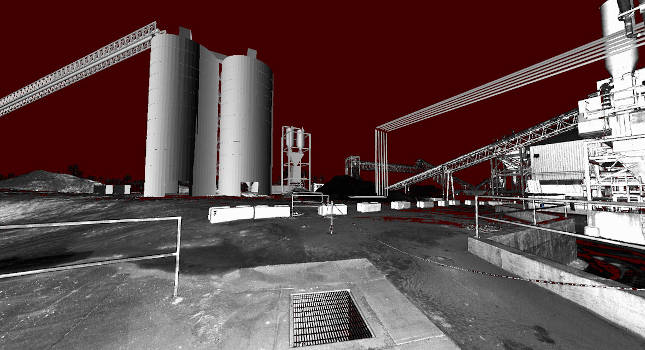Troubleshooting a pneumatic system has been considered an art, a science, or just hit-or-miss luck. In the minds of maintenance personnel, production managers, and plant managers, the word troubleshooting conjures up images of hours of downtime and lost production. However, when reduced to its basic elements, troubleshooting a pneumatic system is a step-by-step procedure.
Key Concepts
- Troubleshooting, done in a logical manner, can solve most pneumatic system problems.
- Safety should be the first consideration when troubleshooting.
- Inspect the equipment and question the operator to help solve problems in pneumatic systems.
Troubleshooting a pneumatic system has been considered an art, a science, or just hit-or-miss luck. In the minds of maintenance personnel, production managers, and plant managers, the word troubleshooting conjures up images of hours of downtime and lost production.
However, when reduced to its basic elements, troubleshooting a pneumatic system is a step-by-step procedure. Using this process can speed up the ability to determine what the problem is, the probable cause of the malfunction or failure, and a solution.
Every pneumatic circuit has a logical sequence of operation that can involve timing logic, pressure sensing, position sensing, and speed regulation. Troubleshooting is initiated when the circuit does not operate properly.
Certain general diagnostic and testing steps can be applied to any troubleshooting problem, whether the problem occurred at startup of a new system or at a breakdown of an existing system.
Think safety first
Safety should always be a prime concern of maintenance personnel. Compressed air is a volatile element in a pneumatic circuit. Air receiver tanks have exploded, causing severe injury to personnel and damage to property. It is imperative to relieve pressure in a receiver tank prior to making any repairs.
Air is also highly compressible, which is another reason to be cautious in the approach to troubleshooting a pneumatic system. When working with overhead loads that are supported by cylinders, but not mechanically locked into position, block the load before servicing the system to prevent falling or drifting.
Many pneumatic systems are controlled by electrical or electronic devices. Before attempting service or repair on these components, be sure the electrical power supply has been turned off.
Pneumatic directional control valves that use electrical solenoids to operate the valve spool are often equipped with manual overrides (Fig. 1) that can be used during troubleshooting to operate the system.
Pneumatic lockout valves (Fig. 2) are excellent safety devices that, when used properly on pneumatic systems, can prevent accidental operation. Ensuring a safe condition should always be the first step in troubleshooting pneumatic systems.
Ask the three Ws
When a breakdown in the system occurs, the pressures of downtime loom large in the minds of all concerned. Before beginning repair of a system, stop and ask these three questions:
What is or is not occurring in the system’s operation?
When did the problem begin? Was it a sudden failure or a gradual failure?
Where in the machine cycle does the problem occur? Was it at startup or after the system has been operating for a while?
What is or is not occurring in the system can often be answered by the system operator. Answers to questions such as slow actuator speed or inability of the actuator to move could lead to looking for a low flow rate or low pressure.
Asking, ” When did the problem begin?’ can often lead to troubleshooting steps looking for worn components or leaks. Sudden malfunctions can point to breaks and possible mechanical problems, ruptures in lines, or other catastrophic failures. By determining the when, the problem search can be narrowed in its scope.
Asking, ” Where in the machine cycle does the problem occur?” can reveal a reoccurring condition.
If good maintenance records have been kept, reoccurring problems should have been recorded. This information makes the troubleshooting process much easier.
A maintenance person who stops and asks the three Ws can reduce downtime by not having to guess at what is wrong. However, if these questions do not yield a satisfactory diagnosis the maintenance person must begin the mechanics of troubleshooting by visually inspecting the machine.
Make a visual inspection
Walking around the machine will often uncover problems such as worn or burst hoses, loose components, and broken components. This is the time to become familiar with the components contained in the pneumatic system.
If unfamiliar with the components, or if unfamiliar with the machine operation, ask as many pertinent questions about the system as possible. Before trying to operate the system or attempt repairs, understand the interrelations of all the components and the sub-systems found on the machine.
Read the schematics
Every pneumatic system should have two forms of documentation that will assist in troubleshooting. One document is a schematic drawing of the pneumatic circuit (Fig. 3). The schematic is a road map. It not only explains the operating function of the components but also is a valuable diagnostic tool.
The schematic contains useful information about pressure test point locations; pressure settings of regulators and other pressure valves; flow rates within the system; cylinder stroke lengths, and air motor speeds as well as a bill of materials for the system. This type of information can aid in determining if the system is operating within its design parameters.
Along with schematics supplied by the manufacturer, another set of documents, the service/maintenance manual and its service bulletin updates, may be available to assist in the diagnosis and repair of the machine. These may contain information about the problem that has occurred.
Operate the machine
After becoming familiar with the components and operation of the pneumatic system, start the machine and operate it to get a first-hand view of the malfunction. See if the malfunction that has been reported occurs again. While operating the machine, perform a visual inspection.
Some questions to ask during the inspection:
-
Is there any excessive air leakage?
-
Are system pressures at the levels specified on the schematic or in the maintenance manual?
-
If there are manual controls for the machine, do they feel stiff or loose in their operation?
-
Are components that move, moving smoothly or erratically?
By operating the machine, any abnormalities may become obvious, shortening troubleshooting time.
Recheck all services
Before attempting repair on the machine after it has been operated, once again check to see if power supplied to the machine has been turned off. Check to see if any stored pressure remains in the system, because this stored pressure can cause premature actuation of the system’s actuators and cause injury to personnel and damage to the machine.
Isolate subsystems
A malfunction in one part of the machine can be caused by a malfunction in a different subsystem on the machine. Isolating the subsystems, can help focus on one system at a time. Narrowing the diagnostic area by isolation of subsystems requires extra precaution while operating the machine.
Any lines that have been disconnected and any ports that have been opened should be plugged properly to prevent unnecessary air leakage and the entrance of contaminants.
While operating the machine, a close watch should be kept on the pressures within the system, so maximum allowable pressures are not exceeded. Caution and safety are the two keys to this diagnostic step.
Make a list
During the previous step, the immediate problem may be quite obvious. However, in troubleshooting, the obvious may not be the root cause.
As an example, the obvious problem may be slow actuator speed but the root cause of the problem could be insufficient lubrication, no lubrication due to a faulty lubricator (Fig. 4), or bad seals within the directional control valve that controls the actuator.
After making a list of possible causes, check those items on the list and eliminate them without going back over ground previously covered. This list will also reduce the time required for troubleshooting and can eliminate the parts exchanging syndrome that often accompanies troubleshooting.
The example of slow actuator speed shows why a thorough understanding of component and system operating principles is required to accurately match the problem to the cause.
After making a list and narrowing the possible causes, it is now time to make a decision on which one of the remaining causes is most likely to be the reason for the malfunction. Reaching this conclusion may, at first, appear difficult but this step is essentially the starting point for the repair portion of troubleshooting. Up to now the system has been evaluated, now it is time to test the conclusion.
In the example, testing the conclusion may be merely the need to add lubricant to the lubricator or make an adjustment to the drip rate of the lubricator.
Conducting various tests such as pressure checks with an accurate gauge, checking actuator alignment, checking flow rate in the system with a flow meter, or temperature checking of the air system, can further reduce the number of causes remaining on the list and accurately pinpoint the cause.
Repair or replace
Testing the conclusion automatically leads to deciding whether to repair or replace a component. Many factors can influence this step. Repairing parts immediately for reinstallation on the machine increases downtime, and the cost factor of this downtime is a significant consideration.
To simply replace the part with a new or rebuilt component would reduce the amount of downtime; however, the question of inventory cost now becomes a factor.
Another point that may influence the repair-or-replace question is component availability. Obviously if the component is not readily available, then repairing may be the only alternative. Still another aspect may be the inhouse capability to make repairs.
After the malfunction has been corrected, one final step remains, the need to report the findings.
Report what you did
Paperwork is often neglected, but in the case of pneumatic troubleshooting it is a vital part of the procedure. This paperwork helps to maintain a record of changes, problems, and solutions that have occurred to individual machines. Schematic updates are necessary to keep this diagnostic tool current and accurate. Report making also serves as a good reference should any problems reoccur in the future.
More Info:
If you have any questions about troubleshooting pneumatic circuits call Parker Hannifin Motion Control and Training Dept. at 216-896-2495 or Parker Hannifin Pneumatic Div. at 616-629-5000. Article edited by Joseph L. Foszcz, Senior Editor, 630-288-8776, [email protected] .
12 Steps to troubleshooting pneumatic systems
Troubleshooting a pneumatic system is neither art, nor science, nor should it be viewed as hit-or-miss; it is a procedural effort requiring 12 steps to accomplish.
Think safety first.
Ask the three Ws – What, When, and Where.
Visually inspect the machine.
Have a thorough understanding of the system. Use a schematic.
Operate the machine.
Recheck all services to the machine. Think safety.
Isolate subsystems on the machine.
Make a list of probable causes.
Reach a conclusion about the problem.
Test the conclusion.
Repair or replace as necessary.
Report the findings.



